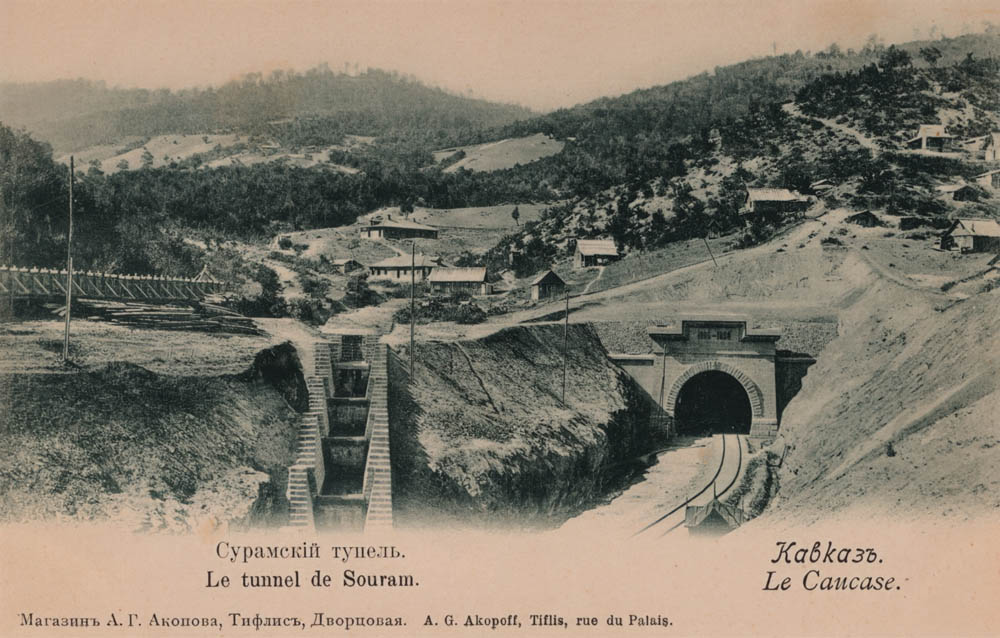The Surami Tunnel connects Eastern and Western Georgia and is located on the Zestafoni-Khashuri railway section. Although railway traffic through the Surami Pass was opened in 1872, this section of the railway was only suitable for light trains, and even those had to be pushed by a helper locomotive. Moreover, this section of the track was not entirely safe.
In light of this, a 4.5-kilometer tunnel was designed, but after geological surveys, the tunnel’s length was reduced to 4 kilometers. Specialists from Germany and Italy were invited for its construction. Drilling of the Surami Pass began on June 6, 1887, from the western side and on January 15, 1888, from the eastern side. The breakthrough of the tunnel was completed on October 12, 1888. Locksmiths and carpenters were also invited from various countries, including Persia, Turkey, and Greece. An eleven-wire cable was laid in the tunnel for telegraph communication, with six wires intended for the needs of the Transcaucasian Railway, and the remaining five assigned to the postal-telegraph district. A total of 5,224,996 rubles was spent on the construction of the tunnel. The ceremonial opening of the Surami Tunnel took place on September 16, 1890.
